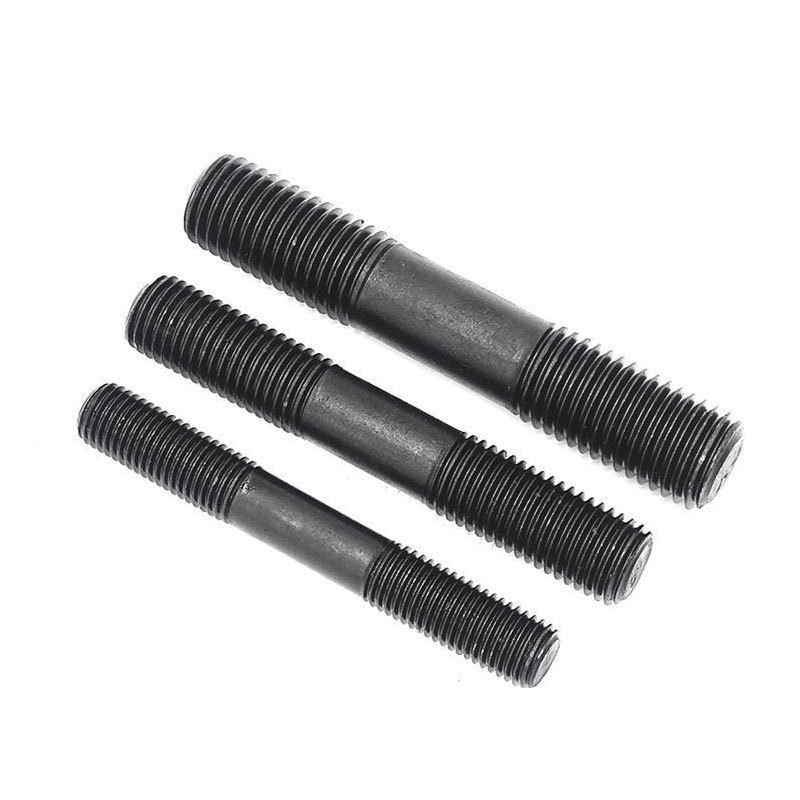

washer m36
ธ.ค. . 29, 2024 17:03 Back to list
washer m36
Understanding Washer M36 A Key Element in Engineering and Manufacturing
In the world of engineering and manufacturing, small components often play a critical role in the overall assembly and functionality of larger systems. One such component that, while often overlooked, is essential to various applications is the washer—in particular, the M36 washer. This article delves into the significance, types, specifications, and applications of the M36 washer, providing insights into why it is an indispensable part of mechanical engineering.
What is an M36 Washer?
The designation M36 pertains to the metric system and indicates the washer's nominal diameter, which is 36 millimeters. Washers are thin plates with a hole in the center, typically made from materials such as steel, stainless steel, plastic, or rubber. Their primary function is to distribute the load of a threaded fastener, like a bolt or a screw, and to prevent damage to the surface of the material being fastened. The M36 washer is specifically designed to accommodate M36 bolts, which have a nominal diameter of 36 mm.
Types of M36 Washers
M36 washers come in various types, each serving different functions depending on the application
1. Flat Washers The most common type, flat washers provide a smooth surface to distribute the load across the material. They help prevent the bolt head or nut from damaging the surface of the material being fastened.
2. Spring Washers Used in applications where vibration is a concern, spring washers create a tension that helps maintain tightness in bolted connections.
3. Lock Washers These washers prevent loosening of the fastener due to motion or vibration. They often have a split or serrated design that digs into the surface of the materials, creating friction.
4. Fender Washers With a larger outer diameter, fender washers offer increased load distribution, making them ideal for use with thinner materials.
5. Raised/Socket Washers These cater to specific applications where additional space or a raised surface is necessary for proper fitting.
Specifications of M36 Washers
When selecting an M36 washer, several specifications must be considered
washer m36

- Material The choice of material impacts the washer's strength, corrosion resistance, and overall durability. Options range from mild steel to hardened steel, stainless steel, and specialized alloys.
- Dimensions The outer diameter, inner diameter, and thickness are critical dimensions. While the inner diameter for an M36 washer is fixed at 36 mm, the outer diameter can vary.
- Finish Various finishes, such as zinc plating or powder coating, can enhance corrosion resistance and aesthetic appeal.
- Standards M36 washers are often manufactured according to international standards, such as DIN (Deutsches Institut für Normung) or ISO (International Organization for Standardization), ensuring consistency and reliability.
Applications of M36 Washers
The versatility of the M36 washer means it finds use across various industries, including
- Construction M36 washers are integral in securing heavy machinery, scaffolding, and structural elements, ensuring safety and stability.
- Automotive In vehicles, M36 washers help secure components under substantial stress, from engine parts to chassis connections.
- Manufacturing In assembly lines, M36 washers are key in maintaining the integrity of products being assembled, from appliances to electronics.
- Aerospace With stringent safety regulations, M36 washers are used in aircraft assemblies, contributing to the safety and reliability of flight.
Conclusion
The M36 washer may seem like a minor component in the larger machinery of engineering and manufacturing, but its importance cannot be overstated. By effectively distributing loads, mitigating vibration, and enhancing the longevity of fastened connections, M36 washers play a vital role in ensuring structural integrity and operational efficiency in a myriad of applications. From construction sites to sophisticated aerospace engineering, understanding the specifications and types of M36 washers can lead to better decision-making and improved outcomes in engineering projects. Whether you're a seasoned engineer or a novice in the field, recognizing the significance of this small yet mighty component is crucial for successful designs and applications.
Latest news
-
Premium Fasteners Manufacturer | AI-Driven Solutions
NewsAug.01,2025
-
Hot Dip Galvanized Bolts - Hebei Longze | High Strength, Corrosion Resistance
NewsAug.01,2025
-
High-Strength Hot Dip Galvanized Bolts - LongZe | Corrosion Resistance, Custom Sizes
NewsAug.01,2025
-
Best Self Tapping Screws for Drywall - Fast & Secure Installation
NewsJul.31,2025
-
High-Strength Hot Dip Galvanized Bolts-Hebei Longze|Corrosion Resistance&Customization
NewsJul.31,2025
-
Hot Dip Galvanized Bolts-Hebei Longze Metal Products|Corrosion Resistance&High Strength
NewsJul.31,2025

